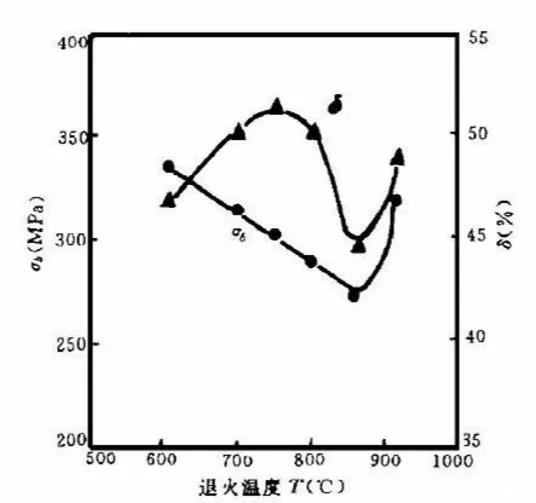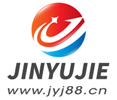Used high frequency tube mills, the effect of annealing temperature on the mechanical properties of welded pipes
- Sort:Information
- Auth:
- Source:
- Release time:2022-01-23 11:30
- Pvs:
【概要描述】We know that used high frequency tube mills will cause work hardening and welding stress during the forming and welding of welded pipes. If the annealing temperature is low, the stress and hardening cannot be fully eliminated, so the welded pipe after annealing has higher strength but poor plasticity. As the annealing temperature increases, the stress and hardening are gradually eliminated, thereby reducing the strength of the welded pipe and increasing the plasticity.
Used high frequency tube mills, the effect of annealing temperature on the mechanical properties of welded pipes
【概要描述】We know that used high frequency tube mills will cause work hardening and welding stress during the forming and welding of welded pipes. If the annealing temperature is low, the stress and hardening cannot be fully eliminated, so the welded pipe after annealing has higher strength but poor plasticity. As the annealing temperature increases, the stress and hardening are gradually eliminated, thereby reducing the strength of the welded pipe and increasing the plasticity.
- Sort:Information
- Auth:
- Source:
- Release time:2022-01-23 11:30
- Pvs:
We know that used high frequency tube mills will cause work hardening and welding stress during the forming and welding of welded pipes. If the annealing temperature is low, the stress and hardening cannot be fully eliminated, so the welded pipe after annealing has higher strength but poor plasticity. As the annealing temperature increases, the stress and hardening are gradually eliminated, thereby reducing the strength of the welded pipe and increasing the plasticity.

But why does the plasticity begin to decrease when the annealing temperature exceeds 800°C? From the iron-carbon phase diagram, we know that in this temperature range, the material is in the two-phase region of ferrite and austenite, and the original structure is partially transformed into austenite, but some ferrite has not been transformed. It can be known by calculation that when the welded pipe is formed, the experimental material undergoes about 10% cold deformation; because the degree of cold deformation is not large, the material rarely recrystallizes during annealing. These untransformed ferrite will grow up during the annealing process, and the higher the temperature, the coarser the grains. These coarse ferrite grains will remain after annealing and cooling. On the other hand, the austenite formed by heating to a high temperature will form fine ferrite grains after cooling, which in turn causes uneven grain size, thereby reducing both strength and plasticity.
When the used high frequency tube mills produces welded pipes, when the annealing temperature is 920°C, the welded pipes have both good strength and plasticity. Due to the welding process, not only a small amount of unbalanced weld structure such as martensite is formed in the weld, but also the grains of the heat-affected zone are coarsened, all of which have an adverse effect on the performance. Only by heating to a temperature above Ac3 to make the structure all austenitized can these effects be eliminated, and the structure of the weld and the base metal tends to be consistent, that is, a fine structure is obtained, thereby improving the mechanical properties of the welded pipe.
Problems that should be paid attention to in the production of welded pipes
If the user requires the welded pipe to have better plasticity, but the strength is not too high, we can use the temperature between 700 ~ 800 ℃ for continuous annealing, in this case, the temperature range is wider, and it is easy to control during the production process.
If the user requires the welded pipe to have higher strength and better plasticity at the same time, annealing between 700 and 800°C will not meet the requirements. Because in the high-frequency welding process, due to the skin effect, proximity effect and heat conduction, the peak temperature of the welding thermal cycle is gradient distribution at the edge of the tube billet opening, and there are melting zones, partial melting zones and overheated tissue zones, etc. Characteristic area. Therefore, the unbalanced structure and coarse structure around the weld have an adverse effect on the performance of the welded pipe; to eliminate these effects, the heat treatment temperature must be increased to Ac3 or more. But the temperature should not be too high, otherwise the performance will deteriorate.
This requires strict control of the annealing temperature in the actual production process to ensure that the annealing temperature is around 920°C. On the other hand, fast cooling is required at the beginning of cooling, which requires the circulating water to have sufficient cooling capacity to ensure a uniform and refined structure after heat treatment, thereby ensuring product quality.
The experiment was carried out in a continuous annealing furnace, and the results of the experiment are shown in the figure below. It can be seen that when the annealing temperature is lower, the strength of the sample is higher, but the plasticity is poor. As the annealing temperature increases, the tensile strength gradually decreases and the elongation continues to increase. This is mainly the result of the gradual elimination of the stress and hardening in the welded pipe during the annealing process. But after the annealing temperature exceeds 800℃, not only the strength continues to decrease, but also the elongation begins to decrease.

In conclusion
If the used high frequency tube mills is required to produce welded pipes with good plasticity and general strength, the temperature between 700 and 800 ℃ can be used. However, when the welded pipe is required to have both higher strength and better plasticity, it is recommended to use a temperature of 920 ℃ and make the water temperature of the cooling water tank lower to ensure a certain cooling rate.
Part of the content of this site comes from the Internet. This site only provides information storage. The copyright belongs to the original author. It does not bear the relevant legal responsibility and does not represent the views and positions of this site. Please contact and delete it if there is any infringement.
More News

Time of issue : 2023-10-31

Time of issue : 2023-10-28

Time of issue : 2023-10-25

Time of issue : 2023-10-22
Wechat: 13392281699
Email: zty@usedpipemill.com
Company address:No. A99, East Lecong Avenue, Lecong Town, Foshan City, Guangdong Province
Recommendation
Online Inquiry
LINK
Contact Us
Tel (wechat): 13336487288
Wechat:+86 13336487288
WhatsApp:+86 13336487288
Email: zty@usedpipemill.com
Address: No. A99, Lecong Avenue East, Lecong Town, Foshan City, Guangdong Province










